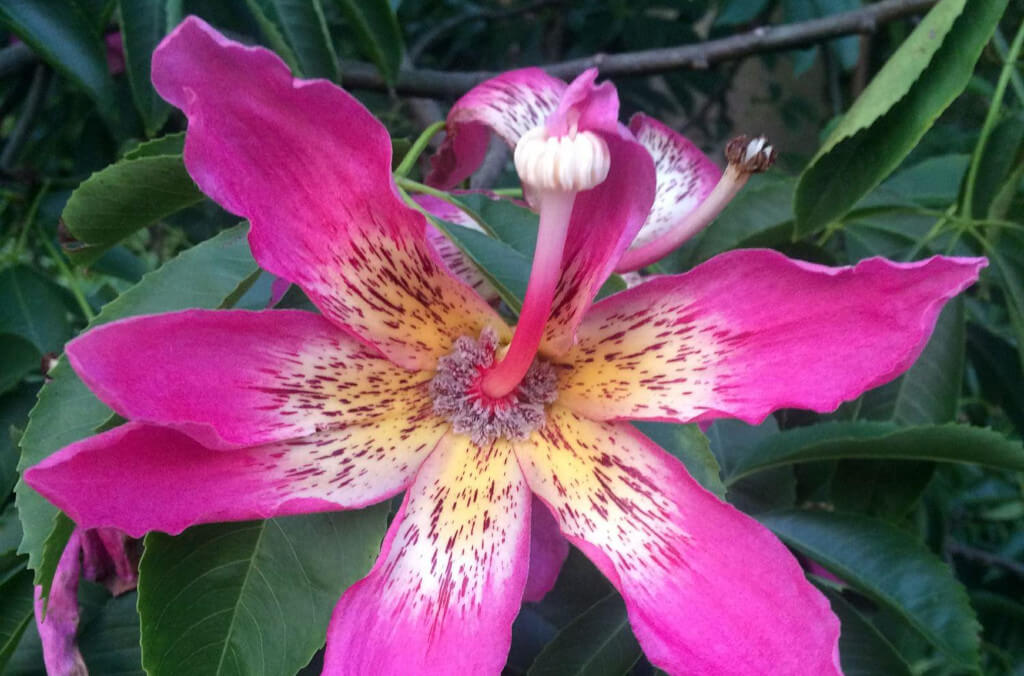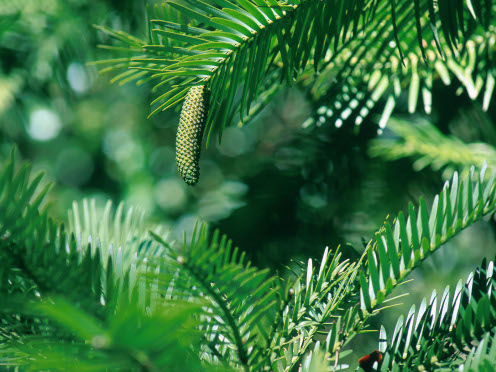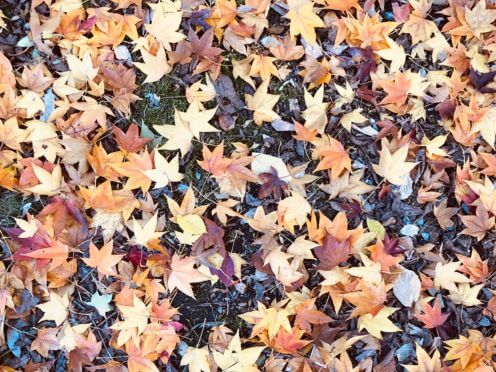Tropical gems and temperate favourites feature this month
Tropical gems and temperate favourites feature on this month's tour.
1. Kiriwong Fishtail Palm
Caryota kiriwongensis
This endangered palm is native to wet forests of peninsular Thailand. Discovered in 1998, the wild population numbers only 50 plants. It is the largest member of the genus, reaching 35m in height, while fronds exceed 8m in length. Leaves are twice-divided with leaflets resembling fishtails. Plants die after flowering and fruiting (monocarpic) but produce thousands of seeds.
Family: Arecaceae
2. Vireya Rhododendron
Rhododendron ‘Pacific Shower’
This Vireya Rhododendron, with pink-red trumpet-shaped flowers, is an Australian bred hybrid using Australia’s only native Vireya, Rhododendron lochiae. There are 300 species of Vireya Rhododendron found throughout Southeast Asia, in both lowland and montane tropical forests (cloud forests), often growing as epiphytes. In the garden they flourish in frost-free niches with dappled shade, in acidic, well-drained soil.
Family: Ericaceae
3. Japanese Windflower
Eriocapitella x hybrida
Strolling through our Camellia beds or along our Spring Walk you will see these delicate white flowers fluttering in the breeze. Their former botanical name Anemone derives from the Greek anemonē - ‘daughter of the wind’. Eriocaptiella x hybrida is a group of perennials with saucer-shaped flowers, produced by crossing three species native to China, but long cultivated in Japan. The closely related, but pink wind flower, Eriocapitella hupehensis can also be seen growing in the Camellia Garden.
Family: Ranunculaceae
4. Aechmea blanchetiana ‘Rubra’
Native to Brazil’s Atlantic coast, this spectacular bromeliad has bright orange leaves when grown in full sun. Aechmea derives from the Greek aichmé, meaning spear - alluding to their spiny leaves. Leaves grow in a rosette, creating a water-collecting well that provides habitat for frogs and insects. Each rosette flowers only once, then dies, leaving pups around the base that can be separated to grow new plants. Flowers are pollinated by hummingbirds in the wild.
Family: Bromeliaceae
5. Mexican Sage
Salvia leucantha ‘Velour Pink’
This elegant perennial is one of many eye-catching Salvias in the Garden. Salvia leucantha has purple flowers and is native to Mexico’s conifer forests. The cultivar ‘Velour Pink’ has velvety white bracts and pink flowers. Flowers of both are perfect for bees seeking nectar. Salvia is the largest genus in the Mint family and the aromatic herb Salvia officinalis (Sage) has been valued for its medicinal and culinary qualities since ancient times.
Family: Lamiaceae
6. Ooray, Davidson’s Plum
Davidsonia pruriens
This slender tree is endemic to rainforests in far north Queensland. In autumn, edible plum-like fruit can be seen growing in clusters directly from the stems and trunk. The fruit’s inner flesh is crimson, sour in taste, rich in antioxidants and an important food for Aboriginal cultural groups. The tree is also popular in cultivation and fruit is used to make jams, sauces and wine.
Note: hairs on leaves and stems may irritate skin.
Family: Cunoniaceae
7. Silk Floss Tree
Ceiba speciosa
Paths strewn with large pink flowers announce the flowering of one of the most spectacular trees in our Garden. The Silk Floss tree produces flowers on the ends of branches, allowing them to be easily spotted by flying pollinators looking for nectar. To fully appreciate these tall, majestic trees you need to walk down the path and view the trees from a distance to admire their large canopy and emerging pink flowers.
Family: Malvaceae

8. Lavelle Hawthorn
Crataegus x lavalleei
This lovely tree is a spontaneous hybrid between Crataegus stipulacea and Crataegus crus-galli, discovered in 1870 growing at the Arboretum Segrez near Paris, France. It has showy, white flowers in summer followed by crimson berries (or ‘Haws’) that are edible but not palatable. Hawthorn fruit have been used medicinally for centuries, for heart and blood pressure ailments.
Family: Rosaceae
Explore the Garden this month
Our guided walks are the perfect way to experience the very best of the Garden.

This month's tour features rare and resilient plants that have survived for millennia.

Botanical art is putting the impacts of climate change on plants in the spotlight following the opening of The Garden Gallery and new labs for the Research Centre for Ecosystem Resilience (ReCER) at the Royal Botanic Garden Sydney.

With a dense collection of cool climate trees nestled in amongst UNESCO World Heritage wilderness, the Blue Mountains Botanic Garden Mount Tomah is one of the best places to marvel at nature’s spectacular show of autumn colour.